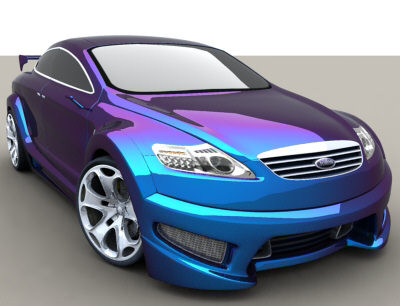
Every year, as snowfall begins, YouTube gets flooded with videos showing cars out of control crashing into everything and people trying to stop their runaway vehicles by pulling them with their hands - not a very a smart idea. While there are moments when Mother Nature is simply unstoppable, a few winter driving tips can make your life much more easier. The British Driving Instructors Association (DIA) compiled a list and we've also added a few tips of our own.
According to DIA, drivers give too much emphasis on the actual skidding, instead of taking precautionary measures, which can help them to avoid the problem in the first place.
For starters, make sure you leave on time from home and prepare your vehicle for the journey. There's nothing worse than a stressed out driver in a rush, constantly tempted to floor the gas pedal on slippery roads.
 It's also very important to prepare your car. In winter, windows will gather frost (minus these) and there's a good chance that the entire car will be covered in snow. If you don't clear the windows and the car, which by the way, is an offence in many countries, you'll be endangering yourself due to the lack of visibility as well as those around you by blinding them with the snow falling off your car.
It's also very important to prepare your car. In winter, windows will gather frost (minus these) and there's a good chance that the entire car will be covered in snow. If you don't clear the windows and the car, which by the way, is an offence in many countries, you'll be endangering yourself due to the lack of visibility as well as those around you by blinding them with the snow falling off your car.
We consider that letting the engine idle for a few minutes in freezing temperatures is a good idea as well, because it's going to extend its lifecycle. Madly revving a cold powertrain just to clear the driveway can cause damages.
Don't forget to check the fuel, antifreeze and windscreen washer levels, and consider pulling the wipers away from the windshield if the car remains stationary for longer periods of time to prevent the rubber from freezing onto the glass.
If you have done all this, you're ready to go, unless of course you don't have winter tires,. Most people tend to neglect this aspect, but it's a big mistake. Tire companies say that normal rubber will lose grip even at 7 degrees Celsius (44.6 F), not to mention below zero (33 F) temperatures. If that's the case, you won't be better off with four-wheel drive either. You might get a bit further than two-wheel drive vehicles, but that's about it without a good set of tires.
But let's say you have winter tires and you're on the road. You should keep a safe distance from other vehicles that have not been cleared, to avoid flying snow and ice that can blind you or even shatter your windscreen.
If there's a steep street ahead, wait for the other cars to reach the top before continuing your drive. Should they slip back, you will be a sitting duck if there's not enough distance between vehicles.
Use a higher (third instead of second, for instance) and if your car has an automatic transmission, check if it has a winter mode. Always accelerate progressively and plan ahead when braking. Use engine braking if possible and avoid locking the brakes. As long as the wheels are turning you can still change the direction of the car, while with locked wheels you'll spin around uncontrollably.
Pay attention to road surfaces. On bridges and flyovers the cold wind can cause the surface to freeze. Sheltered areas can also be hazardous: if the sun doesn't reach them for a few hours you might end up driving on "black ice". Road markings might not be visible, so think twice about stopping in certain spots.
If you live in areas with severe snowfalls, it's a good idea to keep some supplies in your car (drinks, food, blankets, waterproof clothing etc.) and consider buying a shovel and chains in case you get stuck. In extreme conditions, your survival can depend on them, so every penny will be well spent.
Foremost, use common sense. If something feels wrong, don't do it. Once, I saw a sticker on a Land Rover Defender that said, "Caution! This machine has no brain. Use your own". How true is that?
 By Csaba Daradics
By Csaba Daradics
_______________________________VIDEO_______________________________









